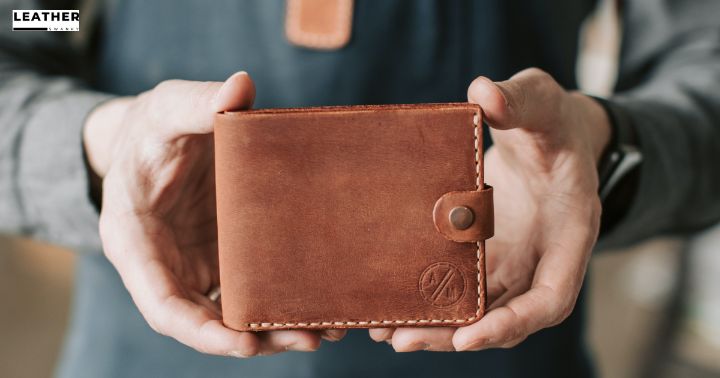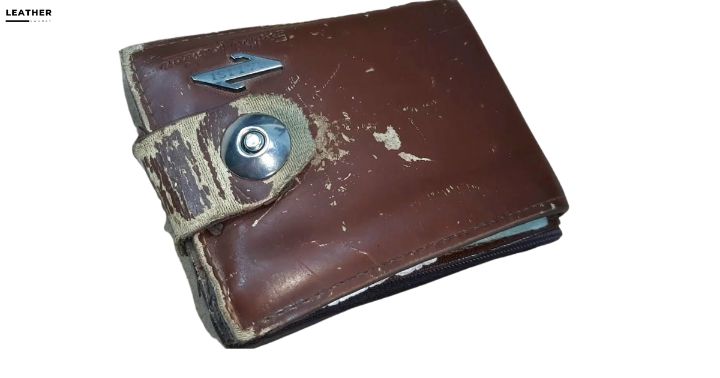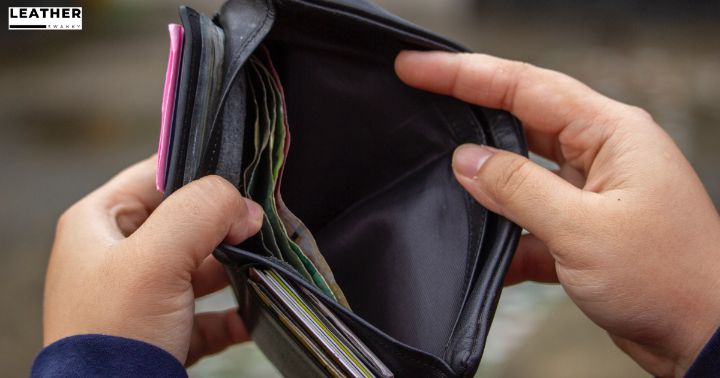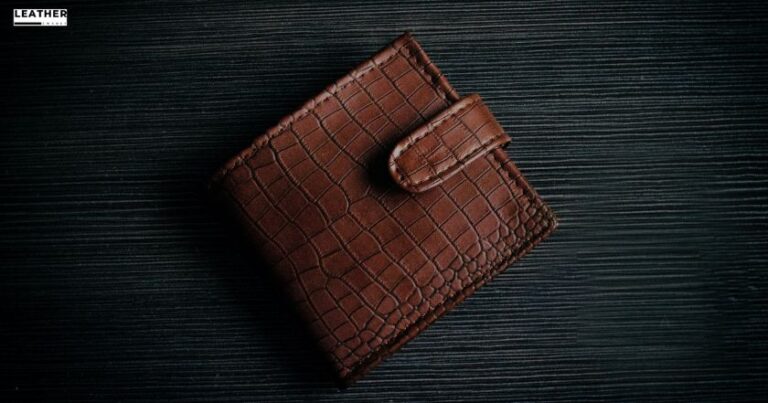Will Leather Wallets Ruin Your Cards?

Are you worried that will leather wallets ruin your cards? You’re not alone. Many people are concerned about the potential damage that can be caused by using a leather wallet.
In this article, we’ll explore the different types of leather wallets, why they may cause damage to your cards, and how to protect them.
Learn all you need to know so you can make an informed decision about which leather wallet is right for you.
Jump to a Specific Section
Summary
- Leather wallets can damage cards over time, so it is important to choose a quality leather wallet made from genuine materials.
- Look for leather wallets with RFID-blocking technology to protect against data theft.
- Regularly check for signs of wear and tear on both the wallet and cards to prevent damage.
- Friction between cards in the wallet can cause scratches, so invest in a good quality wallet with ample space to prevent friction and maintain the integrity of sensitive information.
Understanding the Different Types of Leather Wallets
You need to understand the different types of leather wallets in order to determine if they’ll ruin your cards.
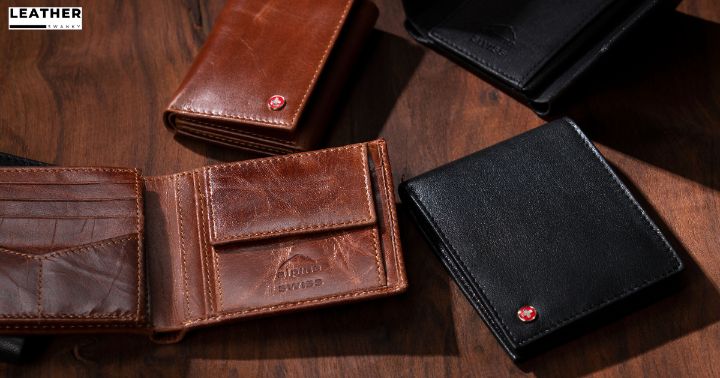
Leather wallets are available in a variety of styles and designs, from classic bifold wallets with card slots to trifold wallets that offer more space for cash and cards.
Some have snap closures while others use zippers or buttons for added security. The type of leather used in the wallet can also affect its durability and longevity.
Smooth leathers tend to be softer and are often more prone to wear over time while full-grain leathers are usually thicker and more resistant to tears or scratches.
It’s important to consider all these factors when selecting a leather wallet as it could ultimately influence whether or not it has the potential to ruin your cards.
Can Leather Wallet Ruin Your Cards?
Does carrying a leather wallet put your cards at risk? It’s a valid concern that needs to be addressed. Leather wallets are often beautiful and durable, but can also damage your cards over time.
To protect your cards from wear and tear, it is important to choose the right kind of leather wallet and take good care of it.
| Keywords | Explanation |
|---|---|
| RFID | Radio-frequency identification technology embedded in some credit cards and IDs for easy scanning |
| Card Damage | Physical damage caused by the wallet to the card over time |
| Wallet Made | Type of material used to make the wallet (i.e. genuine leather) |
| Protect Your Cards | Steps taken to ensure that no damage is done to the card while in its holder or wallet |
| Choose a Wallet | Selecting a quality product suited for an individual’s specific needs, budget, and lifestyle |
The best way to protect your cards is by selecting a quality leather wallet made from genuine materials. A good leather wallet should have RFID-blocking technology built into it in order to protect against data theft or fraud.
Additionally, make sure that you regularly check for signs of wear and tear on both the inside and outside of your leather wallet as well as any credit cards stored inside it over time.
With proper maintenance and care, you can avoid any unnecessary card damage caused by your leather wallet.
Why My CardS Gets Damaged
You may be wondering why your cards get damaged. It could be as simple as scratches from other cards in the same wallet, or it could be more complex issues related to card material and external factors such as coins, body weight, and weather.
In this discussion, we’ll explore all of these possible causes and help you figure out what’s causing damage to your cards and how to prevent it.
1. Scratches from Other Cards
Leather wallets can cause scratches on cards if multiple are stored together, as the friction between them could create abrasions.
It’s important to invest in a good quality wallet made of RFID-blocking material that will keep your cards safe from other items in your wallet, like coins.
This is especially true for those who carry multiple cards and don’t want any unwanted damage done to their sensitive information.
If you’re looking for additional security, RFID wallets provide an extra layer of protection against theft by blocking malicious scans from outside sources.
To ensure your cards stay scratch-free, choose a wallet with ample space so each card can lay flat without touching another one.
In this way, you can easily prevent any potential damage caused by friction between multiple cards and maintain the integrity of your sensitive information.
By investing in a high-quality RFID wallet that provides enough room for all of your items, you’ll be sure to keep your cards safe from scratches and other damages.
2. Damage Caused By Coins
Having multiple coins in your wallet can cause damage to cards if not stored properly, so make sure you invest in a quality RFID-blocking material that’ll keep them safe.
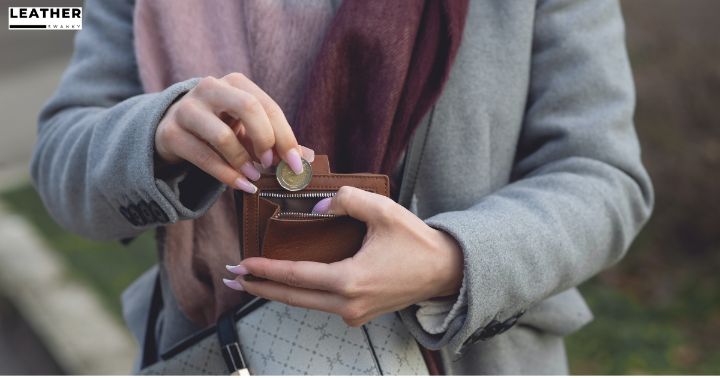
Coins, when kept loose or put in a money clip, can be magnetized by the other coins and metal objects around them.
This magnetism may interfere with the magnetic stripe on your card, resulting in wallet ruin if not addressed quickly.
The weight of the coins might also add pressure to the cards causing physical damage like scratches and dents as well.
To prevent this from happening, opt for a lighter wallet material such as leather that won’t add too much body weight to your cards.
Furthermore, keeping all your cards together with either an elastic band or divider will help prevent any accidental slipping out of place which could cause further damage.
3. Damage Done By Body Weight
Leather wallets can cause damage to the cards inside of them in a variety of ways – one being from the weight of your body.
Sitting or standing on your wallet for long periods of time can place enough pressure on the cards that it will start to wear down their RFID-blocking, Magnetic stripes, and other protective features.
To prevent this kind of damage you should invest in a high-quality leather billfold that won’t be damaged easily by your body weight.
Here are four steps you can take to protect your cards:
- Invest in a quality leather wallet that is designed specifically to protect its contents.
- Look for RFID-blocking technology when shopping around for wallets.
- Make sure it has enough room so the cards don’t get crushed against each other due to overcrowding inside the billfold.
- Avoid sitting or standing on your wallet for long periods as this could lead to demagnetization of the cards inside due to prolonged pressure from body weight.
4. Card Material
It’s important to understand the materials that make up your cards, as certain types may be more vulnerable to damage than others. Stripe cards, for example, have a magnetic strip with sensitive information on them.
You’ll want to make sure you carry those in a minimal wallet and avoid crushing them with your body weight at all costs. Microfiber wallets are also advised when carrying these types of cards, as they won’t cause any damage.
On the other hand, top-grain leather is strong enough to hold up against wear and tear from everyday use. This means that as long as you choose the right size wallet for your cards one that isn’t too bulky your leather wallet shouldn’t ruin them.
5. Damage Caused By Weather
Weather conditions can wreak havoc on cards if not taken into account, causing damage that could render them useless.
Whether you are carrying a credit card with an embedded RFID chip or a debit card with a magnetic field, these cards can be adversely affected by the environment.
Here are four ways weather can cause damage to your cards:
- Privacy policies can be compromised in extreme temperatures;
- Magnetic fields can be disrupted by rain;
- Water can cause corrosion of contact points; and
- Harsh chemicals present in industrial air pollution may eat away at the plastic coating. Therefore, it’s important to take precautions when using leather wallets in inclement weather.
6. Wallet With A Bad Design
Another factor that could potentially ruin your cards is a wallet with a bad design. If you’re not careful about investing in a good quality wallet, it can cause just as much damage to your credit cards as the weather.
Even if you don’t have any direct contact with water or moisture, poor-quality wallets may be made out of materials that generate strong magnetic fields.
This type of wallet can cause demagnetization and render your credit cards useless. So make sure you invest in a good-quality wallet if you want to keep your cards safe.
7. Damage Caused By Magnets
Magnetic fields can wreak havoc on credit cards, even if they don’t come into direct contact with water or moisture.
Wallets made of leather that contain magnetic clasps can damage your cards without you being aware until it’s too late.
Here are some ways to protect your cards from damaging magnets:
- Avoid Apple Cards in a Leather Wallet – Apple Cards may be damaged if placed in a leather wallet containing metal pieces such as magnetic clasps.
- Don’t Overstuff Your Wallet – Too many items in the wallet may cause friction and create a small magnetic field which could ruin your credit cards over time.
- Check for Magnets Regularly – You should check all wallets and other items for magnets before putting any of your cards inside them to avoid any potential damage to your cards.
- Use RFID Blocking Wallets – An RFID-blocking wallet will help protect against any electromagnetic interference that could potentially ruin your card information stored on its chip or strip.
How do I Protect My Cards in My Leather Wallet?
Protecting your cards in a leather wallet is important. Investing in a high-quality leather wallet will keep your cards from being damaged.
Make sure to avoid exposing it to excessive heat, keeping it dry, overstuffing, and folding or bending your cards.
All of these precautions will help ensure that your cards stay safe in their leather home.
Invest in a High-quality Leather Wallet
Invest in a high-quality leather wallet to ensure your cards remain safe and secure. Apple warns that low-quality wallets can cause damage to the cards inside from discoloration, warping, and even deformation of the card’s magnetic strip.
Here are four key benefits of splurging on a well-designed wallet:
- A properly designed slot will keep cards from sliding out.
- High-quality leather is more resistant to wear and tear than cheap alternatives.
- The stitching prevents the leather from coming apart due to frequent use or overstuffing.
- Leather wallets have an elegant look that won’t fade with time as cheaper materials do. The bottom line is investing in a good wallet can help avoid any damage to your cards and make them last longer for many years to come.
By taking these steps, you’ll be well on your way toward protecting your most valuable possessions without having to worry about them being ruined in the future.
Avoid Exposing Your Wallet to Excessive Heat
Excessive heat can damage even the highest-quality wallet, so it’s important to keep it away from sources of heat.
Leather wallets are designed to be durable and long-lasting, but if they’re exposed to too much intense heat, the leather may crack or curl, which can prevent your wallet from closing properly.
This could leave your debit cards and other items vulnerable to magnetism that could erase the information stored on them.
Protecting your wallet from too much heat will help ensure years of use and help you avoid a powerful magnet wiping out all your personal information.
Keep Your Wallet Dry
Water can cause a lot of damage, especially if it contains harmful chemicals or minerals.
Here are 4 ways you can protect your cards:
- Use a card protector – A card protector is a small sleeve that fits over each individual card, preventing water from getting near the card data.
- Keep Your Cards Away From Soft Materials – Leather wallets are attractive and fashionable but they don’t do much to protect against water damage. If you want to use a leather wallet, make sure it’s stored away from soft materials that may absorb moisture and harm your cards in the process.
- Use a Wallet With Maximum Protection – Look for wallets made with waterproof materials such as metal, rubber, or plastic instead of cloth or leather which can easily absorb moisture and damage your cards beyond repair.
- Keep Your Cards In A Safe Place – Whenever possible, store your cards in an airtight container or baggie so they don’t get wet when you’re on the go! Keeping these tips in mind will help ensure that you won’t have any issues with water damaging your credit cards due to using a leather wallet.
Avoid Overstuffing
Stuffing too many cards into your leather wallet can cause them to bend and break, so be sure to keep it light.
| Cash | Credit Cards | Debit Cards | ID Card |
|---|---|---|---|
| Easily Ruined | Get Damaged | Demagnetized | Can Bend |
Overstuffing your wallet with cards can lead to damage that could ruin a credit card or get it demagnetized.
To avoid any potential harm, make sure you are not carrying more than necessary, and don’t force any cards in – even if they fit.
Instead of cramming everything into one wallet, explore different options like a card sleeve for extra storage.
By taking these precautions, you can ensure that your cards stay safe while in a leather wallet and not get damaged by overstuffing.
Avoid Folding or Bending Your Cards
To prevent your cards from being ruined by a leather wallet, it’s important to avoid folding or bending them.
Here are four ways to make sure your cards stay safe:
- Choose a wallet made of leather and denim – these materials are strong enough to keep the wallet from warping over time.
- Make sure there is plenty of room inside the wallet for all of your cards so that they won’t be forced against each other when you close them.
- Place each card in a separate pocket or fold if possible, as this will help protect them from being bent or creased when in use.
- Avoid putting your wallet in the back pocket of your jeans, as this can put pressure on the cards and damage them over time.
Tips for Choosing The Perfect Leather Wallet
When choosing the perfect leather wallet, it’s important to consider its size, features, and quality. If you’re wondering whether leather wallets will ruin your cards, there are some tips to keep in mind that can help protect them.
When purchasing a new credit card, make sure to choose one made of soft materials like calfskin or lambskin. These are more resistant to scratches and abrasions than other kinds of leather.
Additionally, when placing your wallet into a pocket or purse make sure it is not too tightly packed with other items that could cause friction damage on the cards inside.
Consider using an RFID-blocking technology wallet for extra protection against skimming and data theft as well.
By following these simple steps you can rest assured knowing your cards are safe and secure in their leather wallet home.
Final Verdict
You’ve learned about the different types of leather wallets and whether they can cause damage to your cards. You understand why your cards may get damaged and how to protect them in your wallet.
Now you’re ready to choose the perfect leather wallet that won’t ruin your cards. Go for a quality wallet with soft leather, enough compartments, and an RFID shield if necessary.
With this knowledge, you can now confidently purchase the right leather wallet and keep it looking great while keeping your cards safe.
Frequently Asked Questions
How Long Does a Leather Wallet Last?
Generally, a leather wallet should last you years. Its dependability is based on the quality of the leather and how well you care for it. With proper cleaning and maintenance, your wallet can stay in good condition for many years.
What Are The Benefits of Using a Leather Wallet?
Using a leather wallet offers several benefits. It’s durable, and stylish, and can help protect your cards from bending or breaking. Plus, it’s an investment that will last for years.
What Is The Best Type of Leather to Use for a Wallet?
You want your leather wallet to last, so look for full-grain leather. It’s the toughest and most durable, even as it ages. Plus, it looks great!
Is It Safe to Put Money in a Leather Wallet?
Yes, it is safe to put money in a leather wallet. Leather wallets are designed to protect your cash and cards from wear and tear. They’re also secure and provide extra cushioning to keep your bills crisp and clean.
How Do I Clean My Leather Wallet?
Cleaning your leather wallet is easy! Use a damp cloth and mild soap to wipe away dirt and grime. Dry with a soft, dry cloth and condition with leather cream for a longer-lasting shine.

